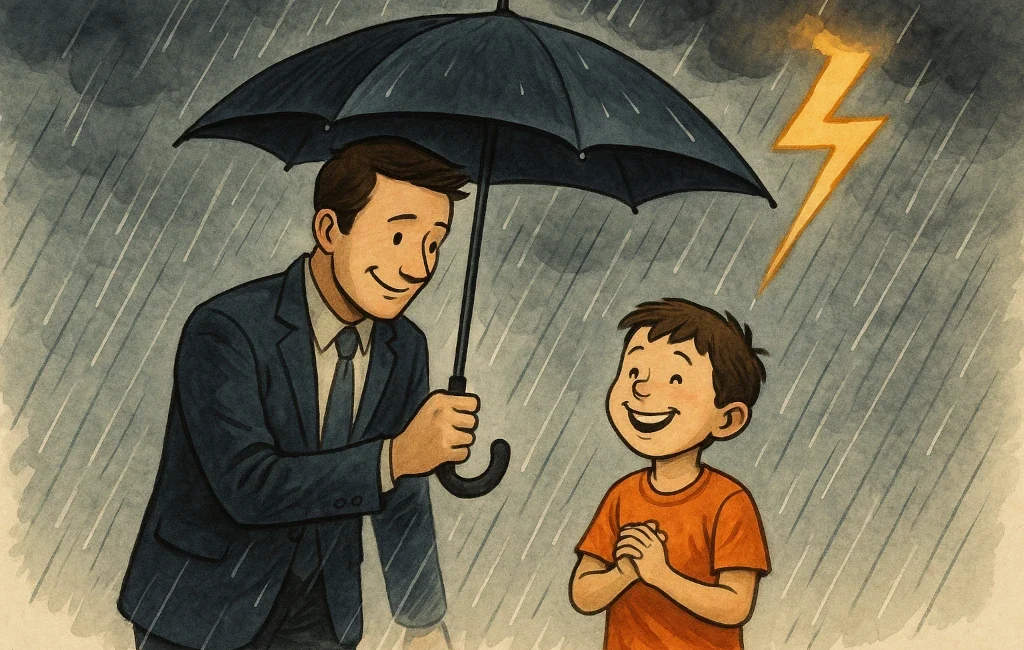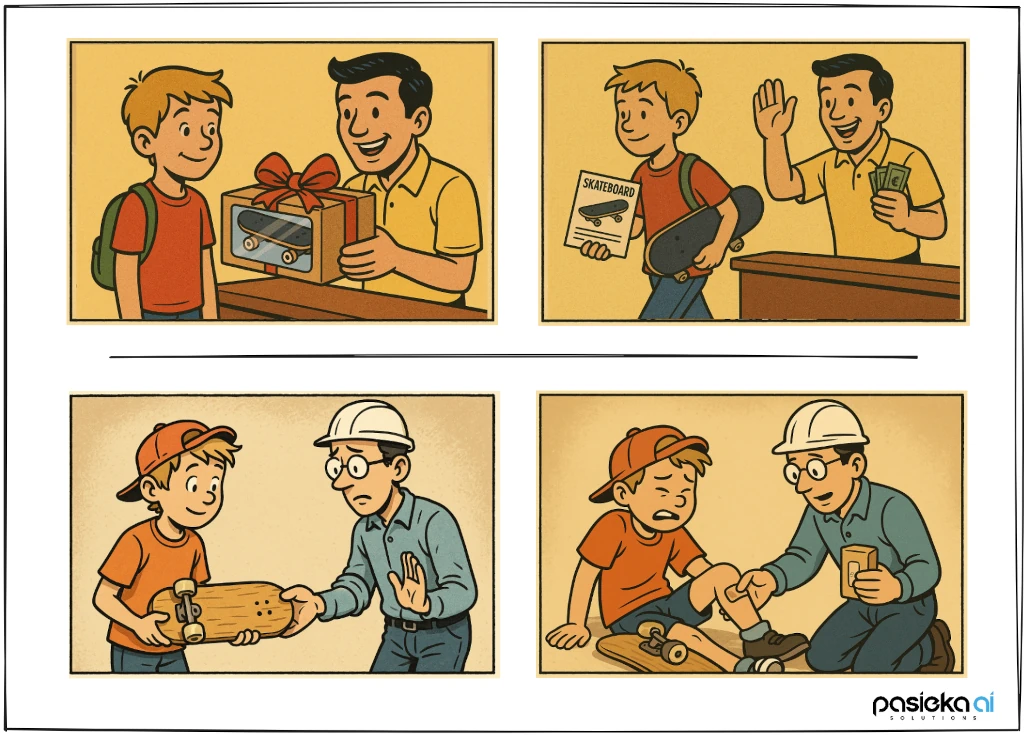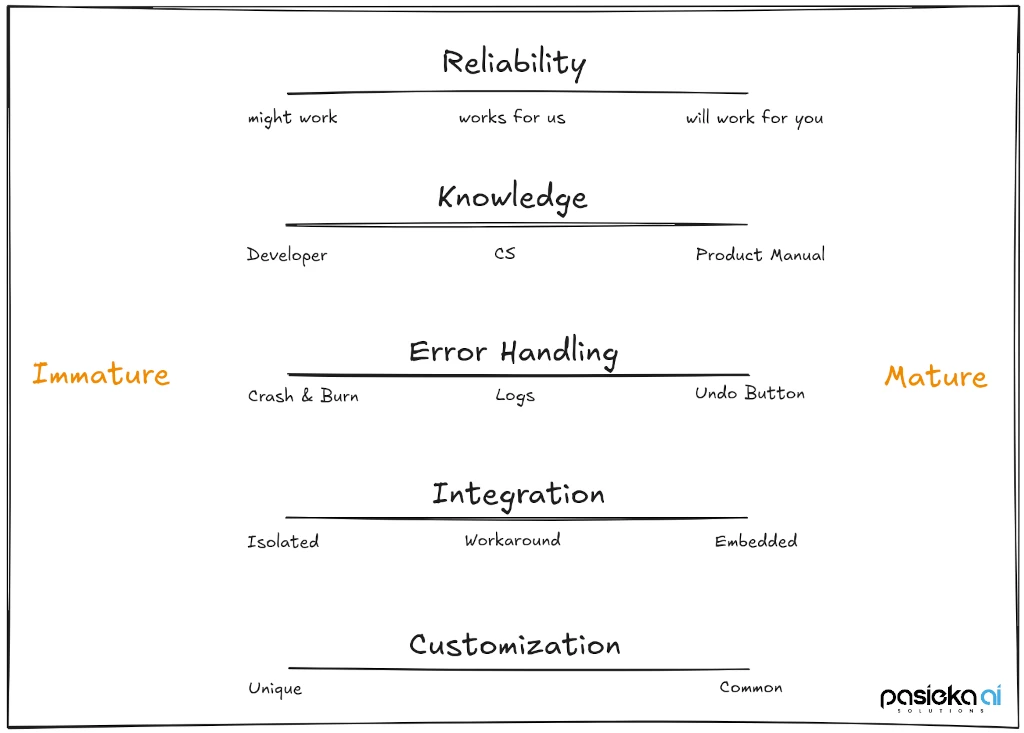Does this conversation sound familiar?
Customer Success (CS): What’s going on with the new Feature XYZ?
Developers (D): What do you mean?
CS: I tried to show it to a customer, and it failed. It completely crashed. I had no clue what was going on—and this customer has been waiting for months!
D: We could only test it on our internal data. We told everyone this was experimental and needed user feedback.
CS: Told who? Where is that written? What exactly does this feature do, and what are we supposed to say when it fails?
D: It’s just the first iteration. We’re Agile, remember? There’s no documentation yet.
CS: How am I supposed to present this to a client?
D: Tell them it’s a prototype.
CS: Great. Except I don’t know what it does, why it fails, or what that two-page error message means. I’m blocking this. No way we’re shipping it.
Welcome to one of the most common challenges in real-world product development:
How do you ship messy, half-finished, chaotic features—while keeping your customers happy and your team sane?
To make this work, you need to do two things:
- Manage customer expectations.
- Align your team around feature maturity.
Managing Customer Expectations
Every product and feature is different, but the way you present something new to a customer usually falls somewhere on a spectrum—with two extremes:
1. The Sales Clerk
The user receives a nicely boxed, certified, shiny new feature. Everything is polished, documented, and ready to go. Everyone smiles, and your CS team can walk away feeling confident.
2. The Engineer
The user gets a shaky prototype. It might fall apart. But the engineer is right there—explaining limitations, cleaning up any messes, and promising improvements.
Let’s visualize this with a skater:
- Sales Clerk Version: A boy walks out of a store beaming, holding a brand-new skateboard and a manual. The salesperson waves happily.
- Engineer Version: The boy gets a sketchy prototype board. It breaks. He falls. But the engineer helps him up, hands him a lollipop, and offers a better version.
You have a choice.
You can act like a Sales Clerk—confident and ready to sell.
Or you can be the cautious Engineer—unsure, but supportive and quick to respond.
Where you land on this spectrum should be a conscious choice—feature by feature.
Selling an untested, unreliable feature as production-ready? That’s a fast way to lose trust.
Over-coaching customers through features that already work? You’ll burn through CS bandwidth and slow down growth.
Aligning Team Expectations
Let’s talk about something just as critical—your own team’s expectations.
Why "Waterfall vs. Agile" Is a Distraction
Product teams often fall into this trap:
- Developers want to ship fast, get feedback, and iterate.
- Customer Success wants to avoid disasters in front of customers.
The result? A pointless argument about Waterfall vs. Agile.
Everyone wants to be agile. Everyone wants fast results.
But you won’t get there if your internal expectations are misaligned.
Instead, focus on feature maturity.
Understanding Feature Maturity
Every feature evolves. It starts as an idea, becomes a rough prototype, and—if you’re lucky—ends up as a valuable part of your product, or gets scraped for a reason.
But internal conflict often arises when people disagree on how mature a feature actually is.
In the best case, you have your own criteria, but if not, we use the following to assess maturity:
A Real-World Example
Say you’re adding support for a new open-source wiki system to your AI agent platform.
You’ve built a rough prototype and tested it with a couple of sample wikis. Here’s where it might stand:
- Reliability: It might work—but no guarantees.
- Knowledge: One dev knows the details. They’ll need to be in every customer call.
- Error Handling: Crashes write some logs. Good luck reading them.
- Integration: It’s not on the platform yet. You’re processing data manually in an external tool.
- Customization: You’re not building exactly what one big client asked for—you’re generalizing for broader value.
So—should you ship it?
It depends on your risk tolerance, customer relationships, and internal resources. If the stakes are low, shipping early might be fine. If the customer is expecting perfection, hold off.
The key is that your whole team knows where the feature stands—and agrees on how to communicate it.
Summary
Building software is hard. Knowing what to build—and how to deliver it—is even harder.
Iterative development steps are no optional. Deciding on what you promise shipping with each iteration to the customer and to yourself is key.
To succeed:
- Manage customer expectations. Be honest. Be clear. Don’t overpromise.
- Align your team on maturity. Know when something’s ready—or not.
- Decide your role. Are you the Sales Clerk? Or the Engineer? And which makes sense right now?
The better you are at managing chaos, the more your customers will trust you—even when things break.
Need help with product strategy or building AI Products?
We’re here to support you at ✉️ [email protected]


